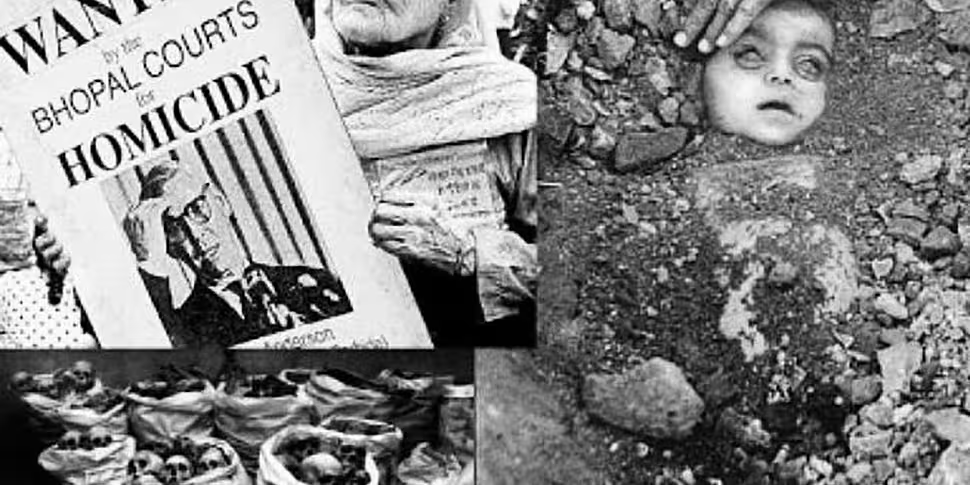On the night of December 2, 1984, the capital of the Indian State of Madhya Pradesh, Bhopal, experienced the worst industrial disaster in history (by a factor of 20). The Union Carbide pesticide plant, built in 1969, had been more or less closed because of a drop in demand for pesticides but large stocks of Methyl Isocyanate (MIC) remained.
Despite previous leaks and warnings of the potential danger, most safety features had been shut off or ignored and only six workers were on site. Water used to wash the pipes entering a 42 ton store of MIC set off a runaway reaction which blew a hole in the concrete tank releasing 30 metric tons of poison gas into the urban centre of Bhopal (2 million people) in under an hour.
Although the figures are in dispute and part of the problems of redress, the minimum number to have died immediately is 2259 (or as high as 3828). 8-10,000 more died within two weeks and at least. Over 25000 deaths had been identified by 2003. 558,000+ people were injured 40,000 severely 4000 permanently. Many victims died fleeing the cloud on foot.
Toxic waste poured into the local drinking water by Union Carbide continues to harm people and produce birth defects in children. This is a separate disaster from the gas leak. Ironically, some of this came from renewed pesticide production as the only way to clear the remaining MIC.
The case also shows how difficult it is to hold multi-national companies to account. The Indian Government passed an act making it the representative of all the victims. CEO of Union Carbide, Warren Anderson, flew to India, but was placed under house arrest and almost immediately flown out on a government plane.
Eventually, the company settled with the Indian government for $470 million, when the government had been seeking $3.3bn. The US Supreme Court declined to hear a case brought against Union Carbide in US courts, blocking the ability of the victims to sue there.
In 1991, the Indian government tried to extradite Anderson and other US executives, but in the end (2010) only seven Indian employees of Union Carbide were convicted and given the sentence of two years and $2,124 fine, the maximum fine that could be imposed. They were all released on bail soon after.
A second lawsuit regarding the toxic water, filed in the US in 1999 under the very interesting 1789 Alien Tort Claims Act, was dismissed and prevented from being appealed in 2012.
The failures by both Union Carbide (now owned by Dow) and the Indian government to recognize further obligations to quadruple compensation to a much larger number of victims and to clean up the toxic water have led to ongoing activism. Just last month, six women victims went on hunger strike also refusing water and forced the government to acknowledge the new figures and act. We'll see.
Graham Finlay, School of Politics and International Relations speaks to Sean every Tuesday from 3pm
Listen back to the segment here:









